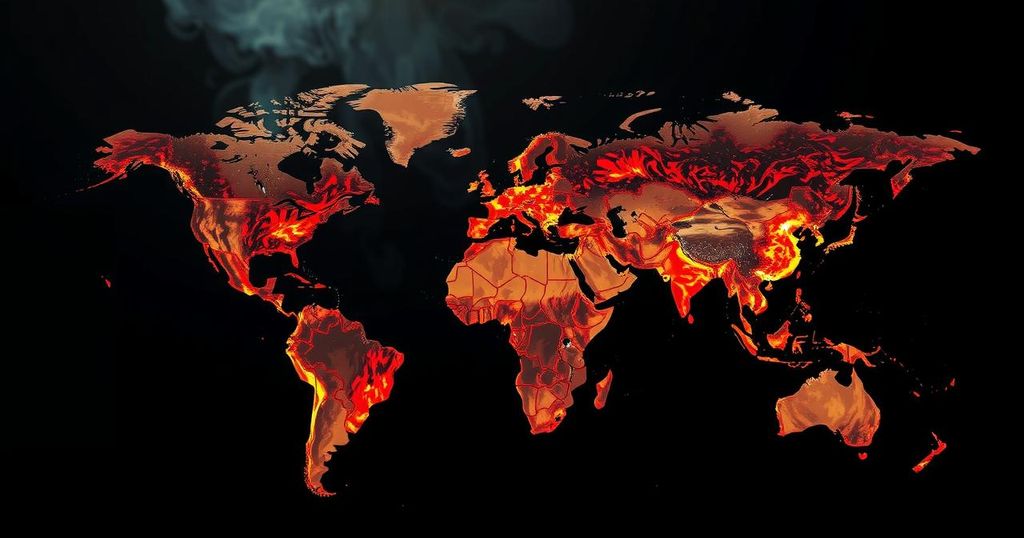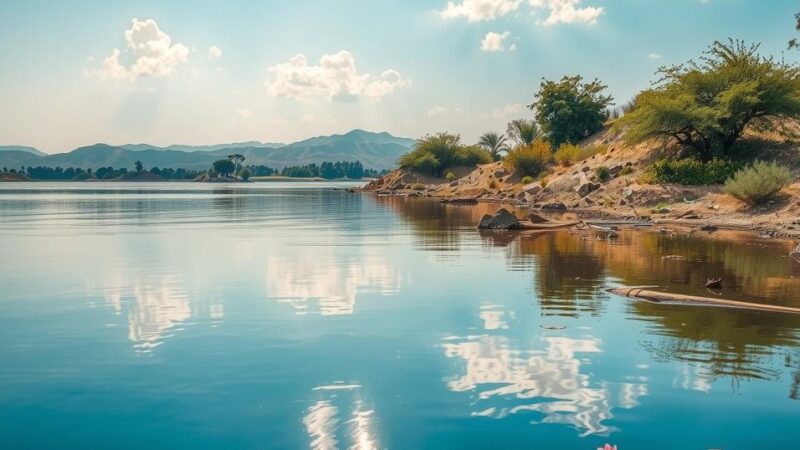Climate change has led to an over 15% increase in global burnt area between 2003 and 2019, according to a new study. Central Australia shows the largest rise, with overall contributions increasing by 0.22% annually. While human activities have reduced burnt areas globally, climate change effects are rising, necessitating urgent mitigation efforts.
A recent attribution study has revealed that climate change has likely led to a more than 15 percent increase in global burnt area from fires between 2003 and 2019. According to the research published in Nature Climate Change, the annual contribution of climate change to the area affected by fires has risen by 0.22 percent on a global scale, with central Australia experiencing the most significant increase. Chantelle Burton, a researcher at the Met Office Hadley Centre and a co-lead author of the study, emphasized the growing significance of climate change in intensifying fire conditions, stating, “Our study demonstrates that when fires do occur, the influence of climate change with drier and warmer weather conditions is increasingly significant.” Previous investigations lacked quantification of climate change’s total impact on global fire regimes. Seppe Lampe, a PhD researcher at Vrije Universiteit Brussel and also a co-author, expressed the aim of the study, saying, “We wanted to quantify the amount of burnt area we could attribute to climate change. It is no secret that climate change is affecting wildfires. However, how much climate change is affecting it, we don’t know. This is what we wanted to answer.” The findings align with conclusions from the Intergovernmental Panel on Climate Change (IPCC AR6), which indicated that anthropogenic climate change has likely increased fire weather across inhabited continents. However, conflicting studies have noted a decrease in the global total burnt area due to agricultural expansion, as reported in a 2017 study published in Science, which documented a reduction of nearly a quarter between 1998 and 2015. Researchers employed global fire-vegetation models to analyze the influences of climate change and socio-economic factors on burnt areas in forests and savannahs. Their analysis indicated a rise in global burnt area owing to climate change, specifically by 15.8 percent from 2003 to 2019. Fire-prone regions identified include Australia, South America, Western North America, and Siberia, where the median burnt area soared by 22 percent in northern Australia, 30 percent in southeastern South America, 18 percent in west Siberia, and 15 percent in western North America, all attributed to climate change. Lampe explained the implications for certain regions, stating, “Some of these regions are sparsely populated, forested regions that are poorly adapted to fires. If longer periods of warm and dry weather become more frequent here, they will lead to bigger fires.” Conversely, densely populated regions may experience more effective firefighting efforts that prevent fires from escalating. The study further observed climate change’s effects on burnt areas in various parts of Africa, where increases accounted for 20.3 percent in central Africa, 2.7 percent in western Africa, and 12.4 percent in northeastern Africa. In total, the researchers detected climate change-induced increases in 35 of the 43 IPCC regions, identifying 13 regions with an annual increase exceeding 0.5 percent since 1980. Interestingly, while human activities have reportedly decreased the global burnt area by 19 percent, the overall impact results in a slight reduction of 5 percent in total burnt area. Lampe noted, “For now, human activity has a bigger effect on reducing burnt area than climate change is increasing it. We do find that the effect of climate change is increasing (0.2 per cent per year), which implies that in the coming decades, this balance will reverse.” Thus, although the net changes due to climate change and human activities appear modest globally, the regional variations indicate more considerable impacts where climate change effects are increasingly evident. The study advocates for immediate and ambitious actions to mitigate climate change and adapt to its consequences, highlighting the urgent need for environmental policy initiatives to address these escalating fire risks.
The article stems from a recent attribution study that investigates the linkage between climate change and wildfire occurrences globally. It emphasizes the growing burden of climate change on fire-prone areas, assuming significance in public policy discussions regarding environmental preservation and disaster management. The context includes prior studies noting fluctuations in burnt areas and the potential role of human activities, such as land use changes and agricultural practices, in these dynamics. The outcomes of the study underscore multiple ecological, social, and geographical factors influencing fire regimes, critical for future climate policy and resource management.
In summary, the attribution study indicates a significant rise in global burnt areas attributable to climate change, escalating by over 15 percent from 2003 to 2019. With certain regions, such as Australia and parts of South America, showcasing particularly alarming increases, the findings stress the urgent need for enhanced fire management strategies and climate adaptation measures. Although human activities currently ameliorate the total burnt area, the accelerating influence of climate change signals a fundamental shift that may prioritize immediate climate action in addressing wildfire risks for the future.
Original Source: www.downtoearth.org.in






